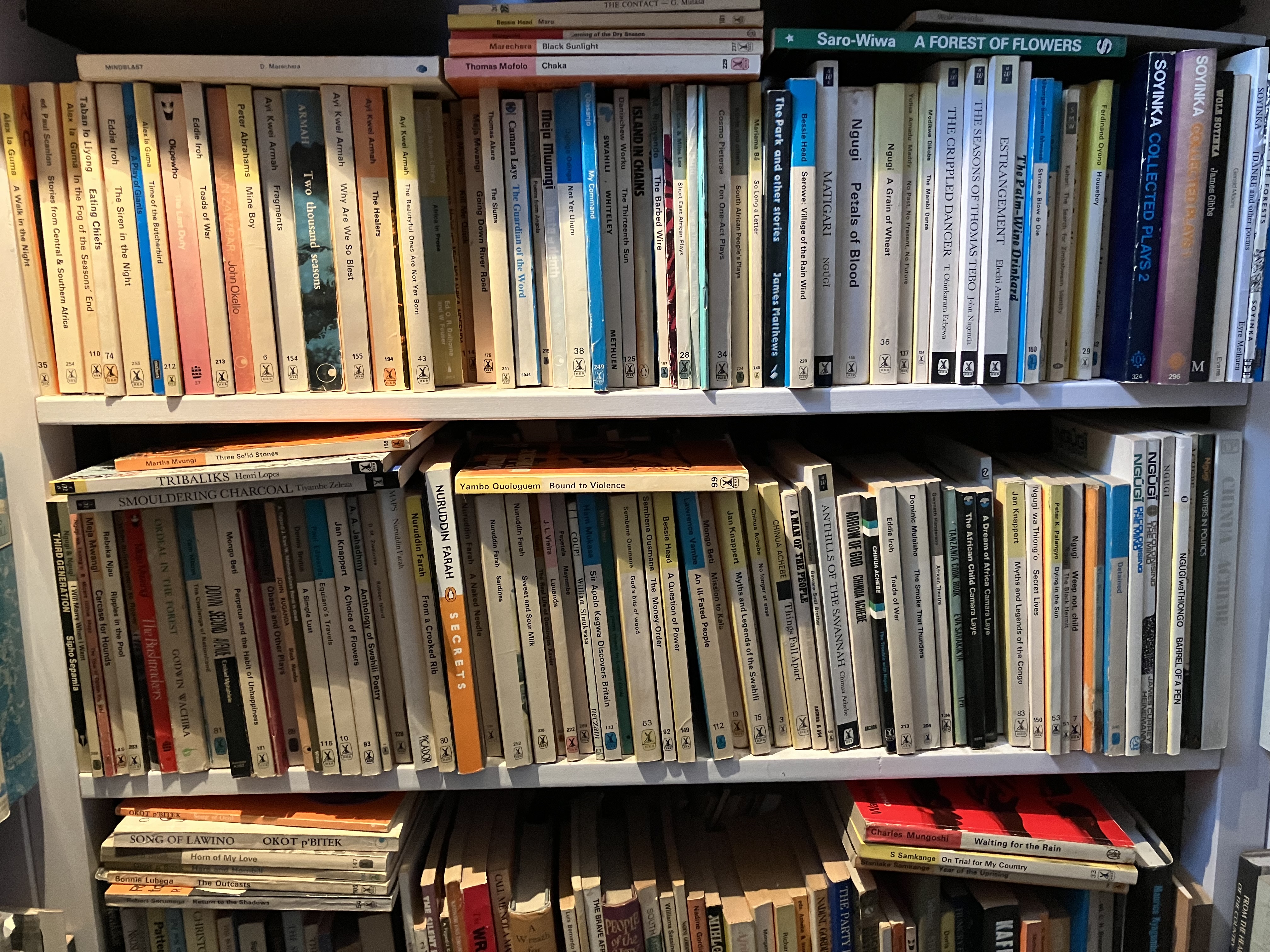It is time to celebrate the elders of African literature. Time to exchange memories of our first reading experiences. To take a look at our bookshelves or at those in public libraries: where can we find those orange coloured, cheap paperbacks of the African Writers Series? Which book was it again that impressed me most? Write to us.
Voor Nederlandse versie klik hier.
On this site of the ZAM Boekenclub van lezers en schrijvers (ZAM Bookclub of readers and writers) and during live events we will pitch our favorites from the series. Write an email to us with your personal recommendation: which novel is your favorite and why?
We are bilingual: Dutch and English. We are curious to hear from fellow-readers outside the Netherlands, and in Africa in particular!
Things Fall Apart
The African Writers Series started officially in 1962 with Things Fall Apart by Chinua Achebe. The novel had first been published by Heinemann in 1958. Achebe also acted as adviser and prime mover for the series. The series was the responsibility of the department for schoolbooks: Heinemann Educational Books. Schools in Africa ordered the books in advance, that's why the price could be kept low.
In 1967 James Currey became the editor and thanks to his enthusiastic leadership the series reached number 270 in 1984, the year that he quit. The publisher had decided to limit the number of new titles to a mere handful each year, which Currey found unacceptable. He started his own publishing house, but for non-fiction titles. In the twenty years that followed the series expanded with another hundred titles until Heinemann stopped the series altogether in 2003.
James Currey has related all this history in his own book 'Africa Writes Back, the African Writers Series & the Launch of African Literature', published in 2008. You can read an interview with Currey (in Dutch) on this site.
Readers in Africa and Europe
The books found their way to school children all over Africa, but also to readers in Europe. Almost all writers who would become well-known later on, started off with publications in this series: Ngugi wa Thiong'o, Buchi Emecheta, Alex la Guma, Ayi Kwei Armah, Bessie Head, Dambudzo Marechera, Nuruddin Farah en Wole Soyinka. Novels by authors writing in French like Sembene Ousmane and Mongo Beti were translated for the series. Also of course the controversial masterpiece Bound to Violence by Yambo Ouologuem. You can read some articles on our site in Dutch about it.
Younger writers of today have grown up reading titles from the African Writers Series. These days they can get published by a large number of different publishing houses in Europe or the United States. But they owe a lot to these older authors, writing during the struggle for Independence, around 1960, and the often difficult times that followed.
The AWS always got criticized as well. Did such a special space for literature from African countries not resemble some kind of ghetto? Why did the series have so few female writers? Did the editors not have too much power in the selection of who was worthy of admission to the elite club of 'African Writers'? And always there could be found blind spots on the literary map of Africa, that had escaped the attention of the editors. And what about the heated debates about literary quality, political activism, form and content, the relation to the West? It's all up for discussion at our ZAM Boekenclub.


